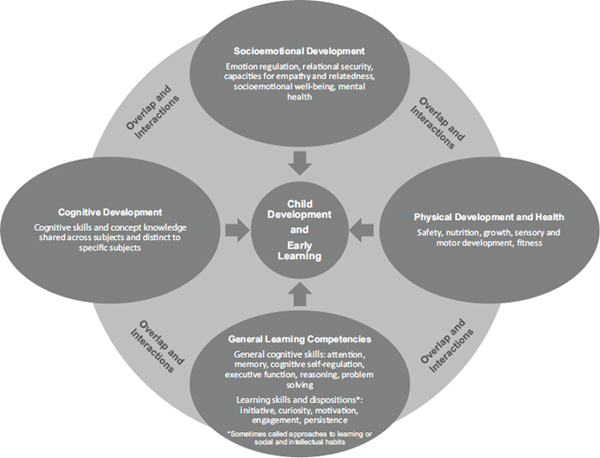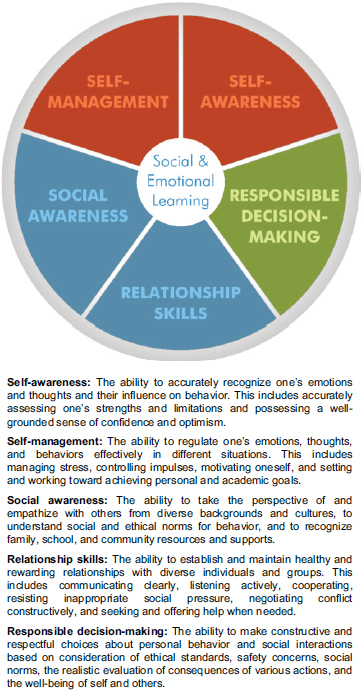Question
In: Anatomy and Physiology
Choose a developmental domain covered in Module 2 (motor, self-care, cognitive). Provide a rationale for why...
Choose a developmental domain covered in Module 2 (motor, self-care, cognitive). Provide a rationale for why development in this area is important for overall child development. Provide three strategies you would recommend caregivers implement at home to advance their childrens' skills in the chosen developmental domain.
Solutions
Expert Solution
Answer: They are different categories and ways for the children to habitat some skills majority of the part deals withthe selfcare,communication and making them to understand
Some of the organizational approach for the domains of child development and early learning are:

COGNITIVE DEVELOPMENT:
Understanding of the developing mind, and then presents the implications of this knowledge for early care and education settings. The following section addresses the learning of specific subjects, with a focus on language and mathematics.Studies of early cognitive development have led researchers to understand the developing mind as astonishingly competent, active, and insightful from a very early age
For example, In home we can try infants to engage in an intuitive analysis of the statistical regularities in the speech sounds they hear en route to constructing language . Infants and toddlers derive implicit theories to explain the actions of objects and the behavior of people; these theories form the foundation for causal learning and more sophisticated understanding of the physical and social worlds. Infants and young children also are keenly responsive to what they can learn from the actions and words directed to them by other people. This capacity for joint attention may be the foundation that enables humans to benefit from culturally transmitted knowledge . Infants respond to cues conveying the communicative intentions of an adult (such as eye contact and infant-directed speech) and tune in to what the adult is referring to and what can be learned about it. This “natural pedagogy” becomes more sophisticated in the sensitivity of preschoolers to implicit pedagogical guides in adult speech directed to them . Young children rely so much on what they learn from others that they become astute, by the preschool years, in distinguishing adult speakers who are likely to provide them with reliable information from those who are not . This connection of relationships and social interactions to cognitive development is consistent with how the brain develops.
LEARNING SPECIFIC SUBJECTS:
Interrelationships among different kinds of skills and abilities contribute to young children’s acquisition of content knowledge and competencies, which form a foundation for later academic success. These skills and abilities include the general cognitive development , the general learning competencies that allow children to control their own attention and thinking; and the emotion regulation that allows children to control their own emotions and participate in home activities in a productive way (the latter two are discussed in sections later in this chapter). Still another important category of skills and abilities, the focus of this section, is subject-matter content knowledge and skills, such as competencies needed specifically for learning language and literacy or mathematics.Content knowledge and skills are acquired through a developmental process. As children learn about a topic, they progress through increasingly sophisticated levels of thinking with accompanying cognitive components. These developmental learning paths can be used as the core of a learning trajectory through which students can be supported by educators who understand both the content and those levels of thinking. Each learning trajectory has three parts: a goal (to develop a certain competence in a topic), a developmental progression (children constructing each level of thinking in turn), and instructional activities (tasks and teaching practices designed to enable thinking at each higher level). Learning trajectories also promote the learning of skills and concepts together—an effective approach that leads to both mastery and more fluent, flexible use of skills, as well as to superior conceptual understanding .
SOCIOEMOTIONAL DEVELOPMENT
The development of social and emotional competence is an important part of child development and early learning. Socioemotional competence has been described as a multidimensional construct that contributes to the ability to understand and manage emotions and behavior; to make decisions and achieve goals; and to establish and maintain positive relationships, including feeling and showing empathy for others. Although their importance is widely recognized, universal agreement is lacking on how to categorize and define these areas of development. The Collaborative for Academic, Social, and Emotional Learning offers a summary construct with five interrelated groups of competencies that together encompass the areas typically considered to be part of socioemotional competence.

If we help the children to acjieve these qualities through various resources such as school, home, other places they can pursue more.
Related Solutions
Choose one of the financial statements that were covered in this module: The Balance Sheet, The...
Summarize developmental milestones: fine and gross motor skills, cognitive skills, and language skills that are typically...
Choose one domain of development that is of interest to you – physical, cognitive, or social-emotional....
Choose one of the developmental biological, psychoanalytical, cognitive, or social learning theories, and describe how it...
QUESTION 10: Cerebral palsy involves what type of defects? motor sensory cognitive developmental QUESTION 11: What...
1)What is the importance of self-care in healthcare? 2)What are some self-care strategies?
choose one of the developmental theories (phychosexual-freud, psychosocial-eirkson, cognitive-piaget, or moral development-kohlberg) and exlain when and...
Compare and contrast Piaget’s Cognitive-Developmental Perspective and Vygotsky’s Sociocultural Perspective. Provide an example illustrating each theory....
2. According to statistics reported on CNBC, a surprising number of motor vehicles are not covered...
choose answer no need to provide rationale. Q10: All activities provided to the patients must be...
- Bonita Cole Inc. acquired the following assets in January of 2015. Equipment, estimated service life, 5...
- Accoring to the equation: AssO3 + 3C = 3CO +2As the reaction of 1gmol of AssO3...
- Create a program in Visual studio c++ Frank wants to take his wife, son, and daughter...
- Please show Each Formula and Each Step used to obtain the answer(s). How many 18 Watt...
- 1. Draw the money market with the value of money on the vertical axis and the...
- Even organizations as large and successful as State Farm Insurance have to plan for the future....
- Q. WHAT IS THEORY X AND THEORY Y? Q. IF YOU HAD YOUR OWN COMPANY, WOULD...
 Sydney Mullin answered 2 years ago
Sydney Mullin answered 2 years ago